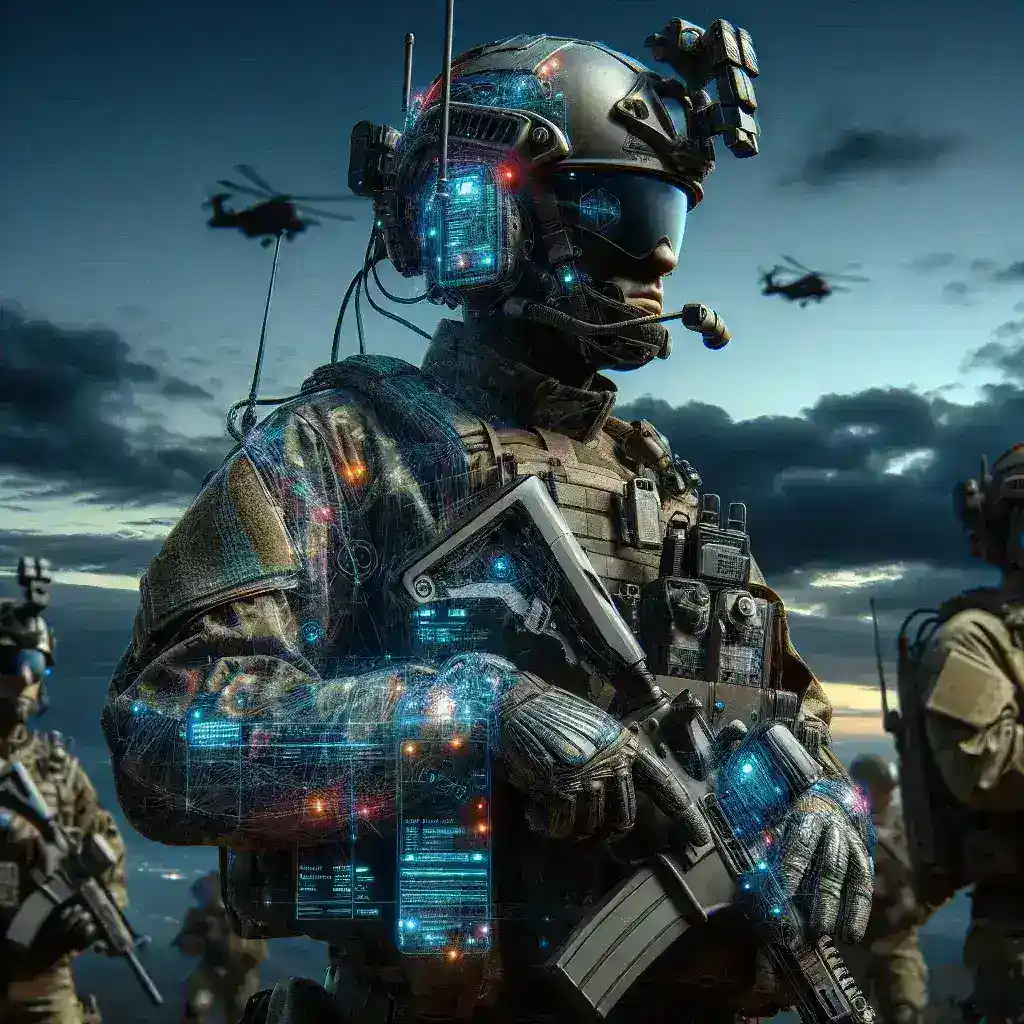The Future of Communication: U.S. Army’s 6G Battlefield Trials
The U.S. Army has taken a significant step towards revolutionizing military communication with the unveiling of a secure 6G battlefield communications trial. As the digital landscape evolves, the demand for secure, efficient, and rapid communication in warfare becomes paramount. This initiative not only reflects technological advancement but also emphasizes the Army’s commitment to remaining a step ahead in the ever-changing battlefield environment.
Understanding 6G Technology
Before delving into the specifics of the Army’s trials, it is essential to understand what 6G technology entails. 6G is the sixth generation of mobile technology, expected to emerge around 2030, following the current 5G deployments. This new generation aims to enhance connectivity, offering significantly higher data rates, ultra-low latency, and improved reliability compared to its predecessors.
Key Features of 6G
- Speed: Theoretical speeds could exceed 100 Gbps, allowing for real-time data sharing and communication.
- Low Latency: With latencies as low as 1 millisecond, 6G will enable instantaneous transmission of data.
- Enhanced Connectivity: 6G aims to connect billions of devices, facilitating seamless communication in smart environments.
The Army’s Initiative
As part of its modernization strategy, the U.S. Army’s trials focus on leveraging advanced technologies to enhance battlefield communications. The deployment of secure 6G networks aims to provide soldiers with superior communication capabilities, ensuring they can operate efficiently in complex and hostile environments.
Objectives of the Trial
- Security: Develop robust communication systems resistant to cyber threats.
- Real-Time Data Sharing: Enable instantaneous communication among troops and command centers.
- Operational Efficiency: Streamline communication to enhance decision-making processes on the battlefield.
Historical Context
The evolution of military communication systems has undergone significant transformations over the decades. From analog radios in World War II to today’s satellite communications, each advancement has aimed to improve operational effectiveness. The introduction of 6G technology represents the next logical step in this progression, poised to redefine military communications.
Past Innovations
Historically, each generation of communication technology has brought about substantial improvements. For instance:
- 1G: Introduced voice communication.
- 2G: Enabled text messaging and basic data services.
- 3G: Brought video calling and mobile internet access.
- 4G: Provided high-speed internet access, revolutionizing mobile experiences.
- 5G: Focused on IoT connectivity and ultra-reliable low-latency communications.
With 6G, the U.S. Army aims to not only build upon these advancements but also apply cutting-edge technology tailored specifically for military operations.
Future Predictions for 6G in Military Operations
As the U.S. Army embarks on this ambitious project, experts predict several outcomes in the future of military operations:
- Increased Autonomy: With enhanced communication, autonomous systems like drones and robots will operate more effectively, improving mission success rates.
- Enhanced Situational Awareness: Troops will gain access to real-time intelligence, allowing for faster and more informed decision-making.
- Improved Collaboration: Joint operations with allied forces will become more seamless through enhanced and secure communication channels.
The Pros and Cons of 6G Implementation in the Army
While the benefits of 6G are promising, it is crucial to consider potential challenges and drawbacks:
Pros
- Robust Security: Secure communication networks will protect sensitive information.
- Speed and Efficiency: Enhanced data transfer will allow for rapid decision-making in critical situations.
- Scalability: The ability to connect numerous devices will enable extensive operations.
Cons
- Cost: The development and deployment of new technology can be financially burdensome.
- Integration Challenges: Existing systems may require upgrades to fully utilize 6G capabilities.
- Cybersecurity Risks: New technology could present new vulnerabilities that adversaries may exploit.
Expert Opinions
Military technology experts have weighed in on the implications of the Army’s 6G trials. Dr. Alex Johnson, a renowned military strategist, states, “The introduction of 6G technology will undoubtedly change the dynamics of warfare. It will enhance our capabilities in ways we have only begun to understand.” This sentiment is echoed by various cybersecurity professionals who stress the importance of creating secure networks to defend against potential threats.
Real-World Examples
Similar technologies have demonstrated their potential in civilian sectors, providing a glimpse into what might be possible within the military framework:
- Smart Cities: 6G technology is expected to facilitate smart city initiatives, allowing for improved traffic management and public safety.
- Telemedicine: The ability to transmit medical data in real-time can significantly impact emergency response and healthcare delivery.
- Remote Work Solutions: Enhanced connectivity has transformed how businesses operate, paving the way for more flexible working arrangements.
Cultural Relevance
The implications of 6G technology extend beyond the battlefield. As society moves towards an increasingly interconnected future, the military’s innovations will play a critical role in shaping the technology that civilian sectors adopt. This dual-use nature of technology will create opportunities for collaboration between the military and the tech industry, fostering advancements that benefit both spheres.
Conclusion
The U.S. Army’s unveiling of the secure 6G battlefield communications trial marks a pivotal moment in military history. As we stand on the brink of a technological revolution, the ability to communicate securely and efficiently on the battlefield will redefine how military operations are conducted in the future. The potential benefits of this technology are immense, but they come with challenges that must be addressed. As the Army continues its trials, the world watches closely, eager to see how 6G will reshape the future of warfare.

